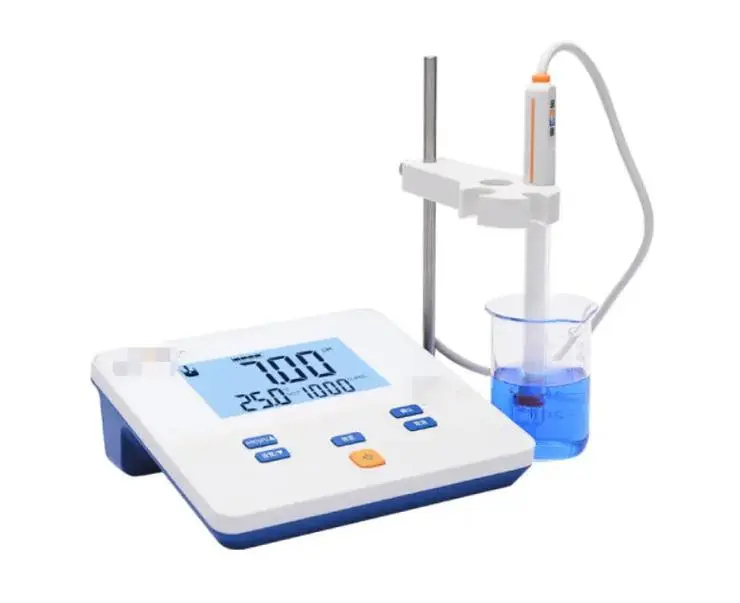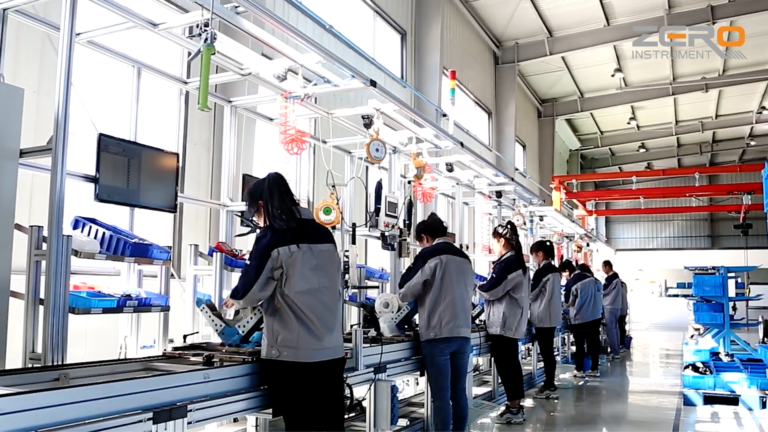A pH meter, also known as an acidity meter, consists of two parts: an electrode and an electric meter. If the electrodes can be properly maintained, standard buffers can be prepared as required, and the electric meter can be operated correctly, the pH indication error can be greatly reduced, thereby improving the reliability of chemical experiments and medical test data.

The electrodes currently used in the laboratory are composite electrodes. Their advantages include ease of use, being unaffected by oxidizing or reducing substances, and a fast equilibrium rate. When using the electrodes, remove the rubber cap from the filling port and the rubber sleeve from the lower end to maintain the hydraulic pressure difference of the potassium chloride solution inside the electrode. Below is a brief introduction to the use and maintenance of the electrodes:
● When not in use, the composite electrode can be fully soaked in 3M potassium chloride solution. Avoid using detergent or other hygroscopic reagents for soaking.
● Before use, check the bulb at the front end of the glass electrode. Under normal circumstances, the electrode should be transparent and free of cracks; the bulb should be filled with solution, without any bubbles.
● When measuring solutions with high concentrations, minimize the measurement time, and clean the electrode carefully afterward to prevent the measured solution from adhering to and contaminating the electrode.
● After cleaning the electrode, do not wipe the glass membrane with filter paper. Instead, use filter paper to blot it dry to avoid damaging the glass membrane and to prevent cross-contamination, which can affect measurement accuracy.
● During measurement, ensure that the silver-silver chloride reference electrode is immersed in the chloride buffer solution inside the bulb to prevent erratic readings on the meter display. When using the electrode, gently shake it a few times.
● The electrode should not be used for measuring strong acids, strong bases, or other corrosive solutions.
● Do not use the electrode in dehydrating media such as anhydrous ethanol or potassium dichromate.

Storage
● Storage within one week: Soak the electrode in a 3 mol/L potassium chloride (KCl) solution to prevent evaporation. Do not store the electrode in distilled water, as this will shorten its lifespan.
● Long-term storage: Rinse the electrode with distilled water. Cover the sensing surface with a protective cap and store it in a dry place.
Cleaning
● Routine cleaning: Soak the electrode in a 0.1M HCl or 0.1M HNO3 solution for 30 minutes, then soak it in a 3M KCl solution for 2 hours.
● Cleaning oil and grease: Rinse with a neutral detergent or methanol solution.
● Cleaning proteins: Soak in a 0.1M HCl solution containing 1% pepsin for 15 minutes or in a sodium hypochlorite solution for 5 minutes.

Precautions
1. Before measurement, select two or three suitable standard buffer solutions as specified for each type of sample to calibrate the instrument, ensuring that the pH value of the test solution falls within the range of these buffers.
2. Before replacing the standard buffer solution or the test solution each time, thoroughly wash the electrode with purified water. Then rinse with the new standard buffer or test solution, or thoroughly wash the electrode with purified water and absorb the remaining water.
3. When measuring test solutions and standard buffer solutions with high pH values, pay attention to alkaline error. If necessary, use an appropriate glass electrode for measurement.
4. If the pH value of the test solution exceeds the range of the standard buffer solutions mentioned above, select two or three standard buffer solutions with pH values close to that of the test solution for calibration.
5. For pH measurement of weakly buffered or non-buffered solutions, unless otherwise specified, first calibrate the instrument with phthalate standard buffer solution, then measure the test solution. Repeat the measurement with a fresh test solution until the pH reading does not change by more than 0.05 within one minute.
Then recalibrate the instrument with borax standard buffer solution and measure again as described above. The pH readings from the two measurements should not differ by more than 0.1. The average of the two readings is taken as the pH value.
6. The water used to prepare standard buffer solutions and dissolve test samples should be freshly boiled and cooled purified water.
7. Standard buffer solutions can generally be stored for 2-3 months. However, if cloudiness, mold, or precipitation is observed, the solution should not be used further.
